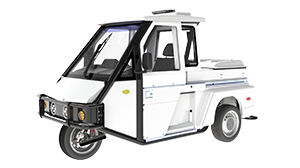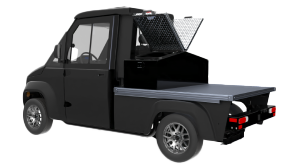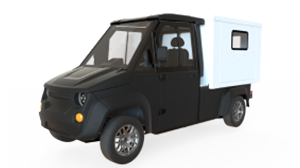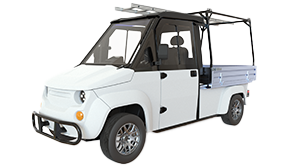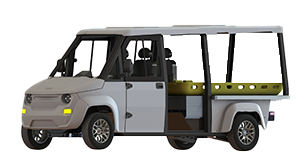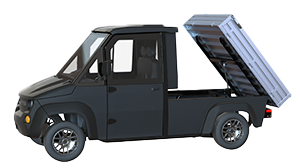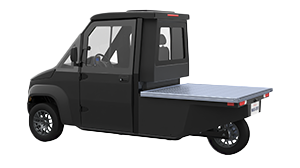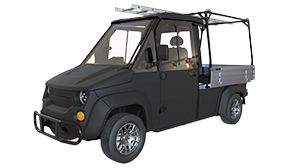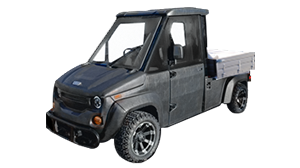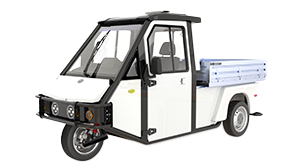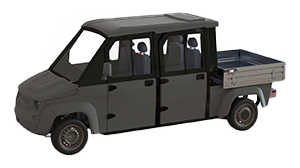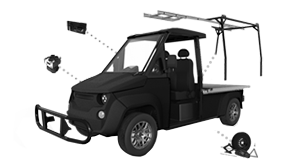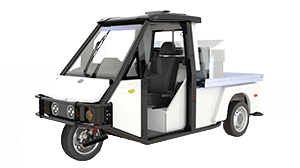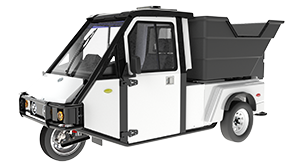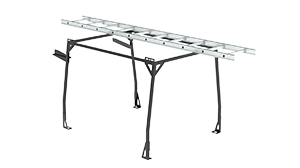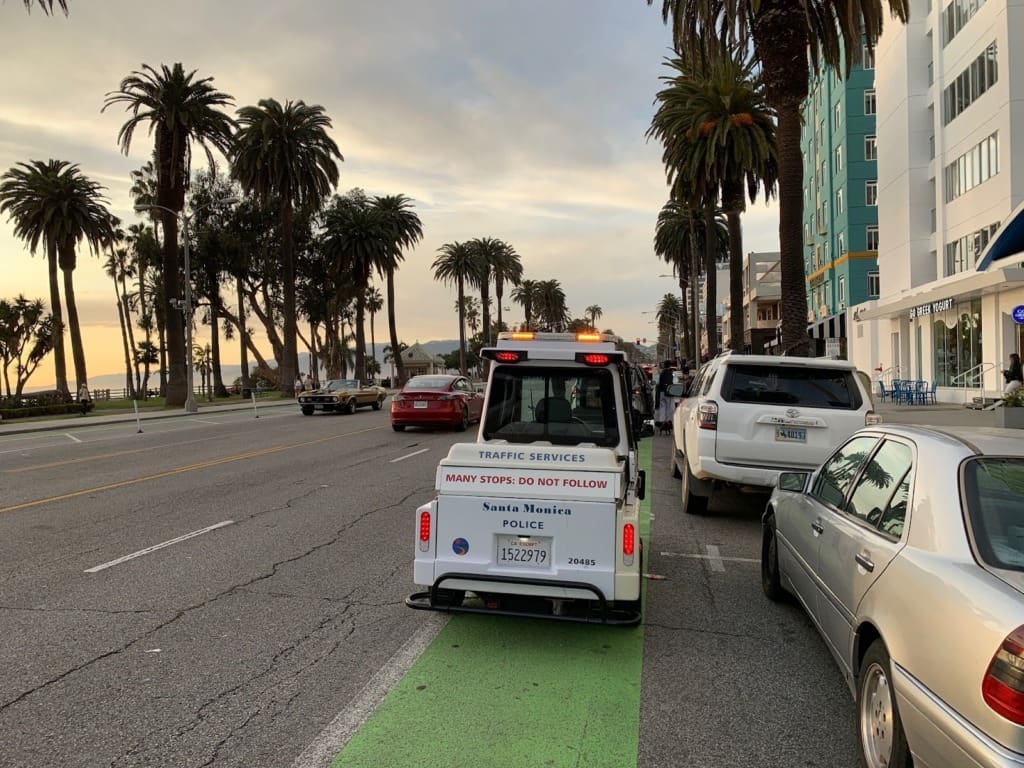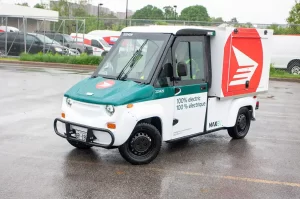Electrifying Urban Landscapes: The Shift to Sustainable Transport
Urban mobility is undergoing a transformation as cities look to replace traditional gas-powered fleets with more sustainable, efficient alternatives. Electric utility vehicles (EUVs) are emerging as a crucial component in this shift, offering zero-tailpipe emission solutions that improve air quality, reduce noise pollution, and cut operational costs. The growing push for cleaner cities has positioned electric vehicles as a key tool in the fight against urban pollution and traffic congestion.
The Rise of Electric Utility Vehicles
As cities prioritize sustainability, electric utility vehicles are becoming essential for urban mobility. With tighter environmental regulations and a global focus on reducing emissions, EUVs provide municipalities and businesses with an alternative that aligns with their goals of lowering carbon footprints while improving operational efficiency. These vehicles are not just about environmental impact—they also offer practical benefits, such as reduced fuel costs, fewer maintenance issues, and long-term operational savings.
Westward’s Electric Offerings
Westward is at the forefront of this shift with its GO-4 EV and MAX-EV models, designed specifically for urban use. These vehicles allow cities to reduce their reliance on gas-powered fleets, supporting the move toward a cleaner, more sustainable future. With their compact design and durable construction, Westward’s electric vehicles are ideal for navigating busy streets and completing essential tasks with minimal environmental impact.
Zero Tailpipe Emissions, Maximum Impact
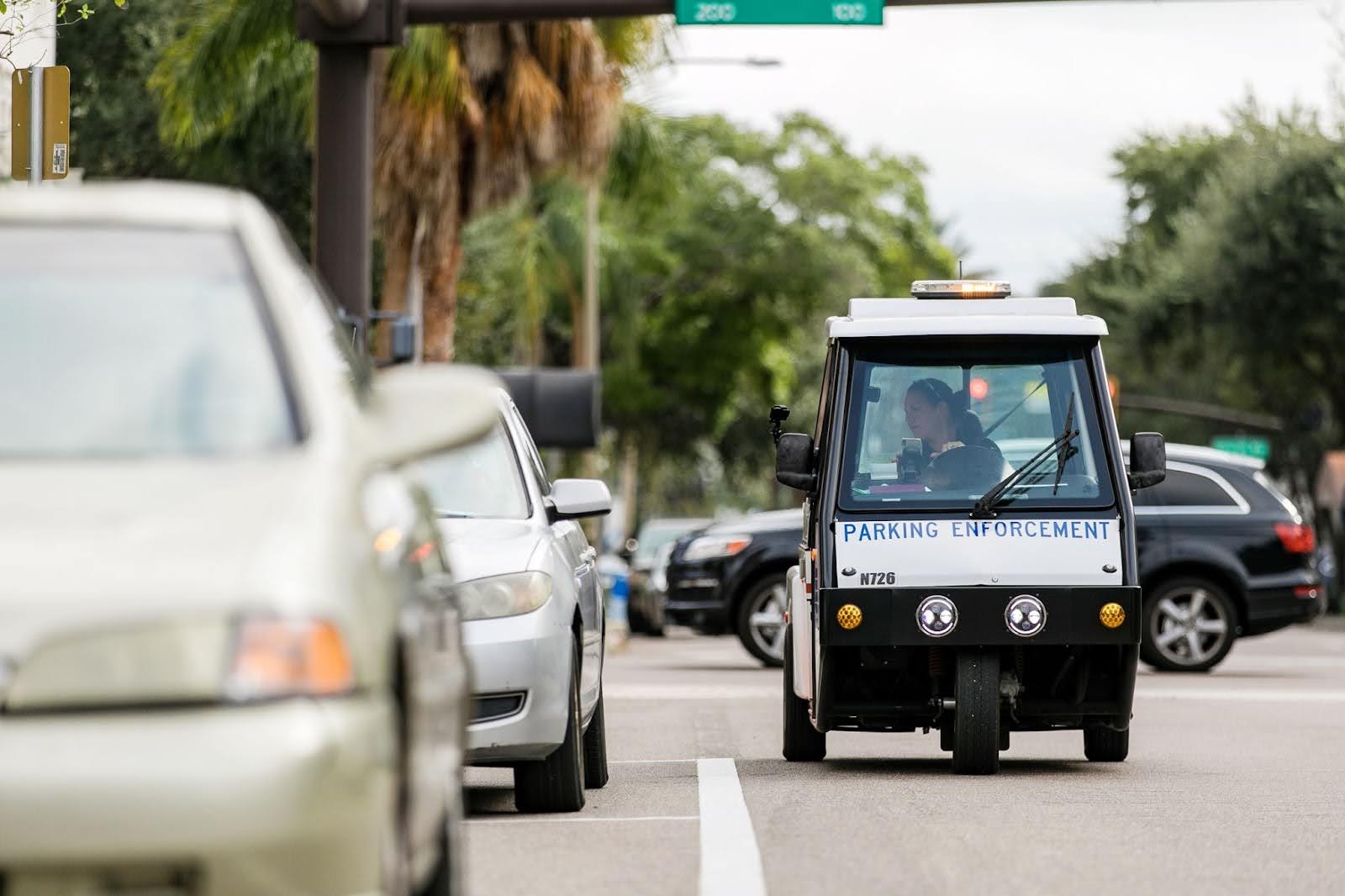
Electric utility vehicles (EUVs) are revolutionizing urban landscapes by providing zero tailpipe emission alternatives to traditional gas-powered fleets. These vehicles significantly reduce the carbon footprint of cities, making them an essential part of any sustainable urban mobility strategy. With zero tailpipe emissions, Westward’s electric vehicles actively contribute to cleaner air, helping cities combat pollution and meet environmental regulations without compromising efficiency.
Environmental Benefits
Westward’s electric vehicles offer substantial environmental benefits, helping cities address air quality concerns while enhancing operational efficiency. Key advantages include:
- Zero tailpipe emissions, which help reduce greenhouse gases like carbon dioxide, methane, and nitrous oxide in urban areas.
- Reduction of smog and particulate matter, improving air quality for residents and reducing public health risks related to poor air conditions.
- Support for clean energy initiatives, allowing cities to align their transportation sectors with renewable energy goals.
Lithium-Ion Batteries
At the heart of Westward’s electric vehicles are advanced lithium-ion battery systems, which provide long-lasting, efficient power. These batteries not only support the vehicles’ operational needs but also help minimize environmental impact. The MAX-EV and GO-4 EV are equipped with high-capacity lithium-ion batteries that deliver:
- Extended range for city-wide operations, reducing the need for frequent recharging.
- Energy-efficient performance, ensuring the vehicles consume less power while delivering maximum output.
- Sustainability through longer lifespans, with batteries capable of lasting for over 2,000 charge cycles, reducing the need for frequent replacements.
Westward’s electric vehicles make a significant environmental impact, helping cities achieve sustainability goals while ensuring efficient and reliable urban transport.
Cost-Effective and Low Maintenance
One of the most compelling reasons for cities to adopt electric utility vehicles is the long-term cost savings they offer. While the initial investment may be higher than gas-powered alternatives, the significant reductions in fuel and maintenance costs provide a return on investment that traditional vehicles cannot match. Westward’s electric vehicles, such as the MAX-EV, are designed to deliver both financial efficiency and environmental benefits, making them an ideal choice for urban fleets.
Fuel and Maintenance Savings
Electric vehicles eliminate the need for gasoline or diesel in operation, offering substantial savings on fuel expenses. Over time, these fuel savings add up, particularly for cities operating large fleets. Additionally, electric vehicles like the MAX-EV have fewer moving parts, reducing wear and tear and minimizing the need for frequent repairs. Benefits include:
- No fuel costs, as electric vehicles run entirely on electricity.
- Fewer mechanical issues, reducing the need for costly maintenance and repairs.
- Reduced downtime, as the simplicity of electric vehicles ensures they spend more time in operation and less time in the shop.
Durable Battery Systems
Westward’s electric vehicles are powered by lithium-ion batteries that are designed to last for up to 2,000 charge cycles. These durable, low-maintenance batteries further contribute to overall savings by reducing the frequency of costly battery replacements. This durability ensures that cities can rely on their electric fleets for years, maximizing efficiency and minimizing long-term costs.
Revolutionizing Fleet Management
Electric utility vehicles are reshaping how cities manage their fleets by offering unmatched versatility and flexibility. Westward’s vehicles, like the MAX-EV and GO-4 EV, are designed to handle a wide range of urban tasks, making them essential for modern fleet operations. Their modular design allows for customization, ensuring that they can meet the specific needs of various city departments, from parking enforcement to last-mile delivery.
Modular Design for Versatility
The MAX-EV’s modular design enables cities to adapt the vehicle to different operational needs. With a payload capacity of up to 1,500 lbs, the MAX-EV can handle a variety of tasks, from transporting goods to maintaining public spaces. This adaptability makes it a valuable asset for urban fleet managers who need vehicles that can shift roles quickly and efficiently.
Factory-Installed Accessories
Westward’s electric vehicles come with factory-installed accessories that enhance their operational capabilities. Features such as ladder racks, tilting beds, and Bluetooth radios allow for greater flexibility in handling diverse tasks. Whether it’s hauling materials for street maintenance or enabling city workers to communicate seamlessly while on the go, these accessories make Westward’s electric utility vehicles indispensable for urban fleets.
Efficient Power, Anywhere You Need It
Westward’s electric utility vehicles deliver energy-efficient performance across a range of urban environments, ensuring that power is available wherever it’s needed. With advanced PMAC motors and Curtis motor controllers, these vehicles optimize energy use, providing reliable power while minimizing energy consumption. This makes them ideal for urban fleets that need to balance operational efficiency with environmental responsibility.
Energy-Efficient Motors
Westward’s vehicles are powered by Permanent Magnet AC (PMAC) motors, which are known for their high efficiency and reliability. These motors convert electrical energy into mechanical power with minimal losses, ensuring that the vehicle can operate for extended periods on a single charge. Benefits of the PMAC motors include:
- Reduced energy consumption, leading to lower operational costs.
- Long-lasting performance, ideal for long shifts and continuous use in city operations.
- High torque at low speeds, making them perfect for stop-and-go urban environments.
Reducing Traffic Congestion with Compact Designs
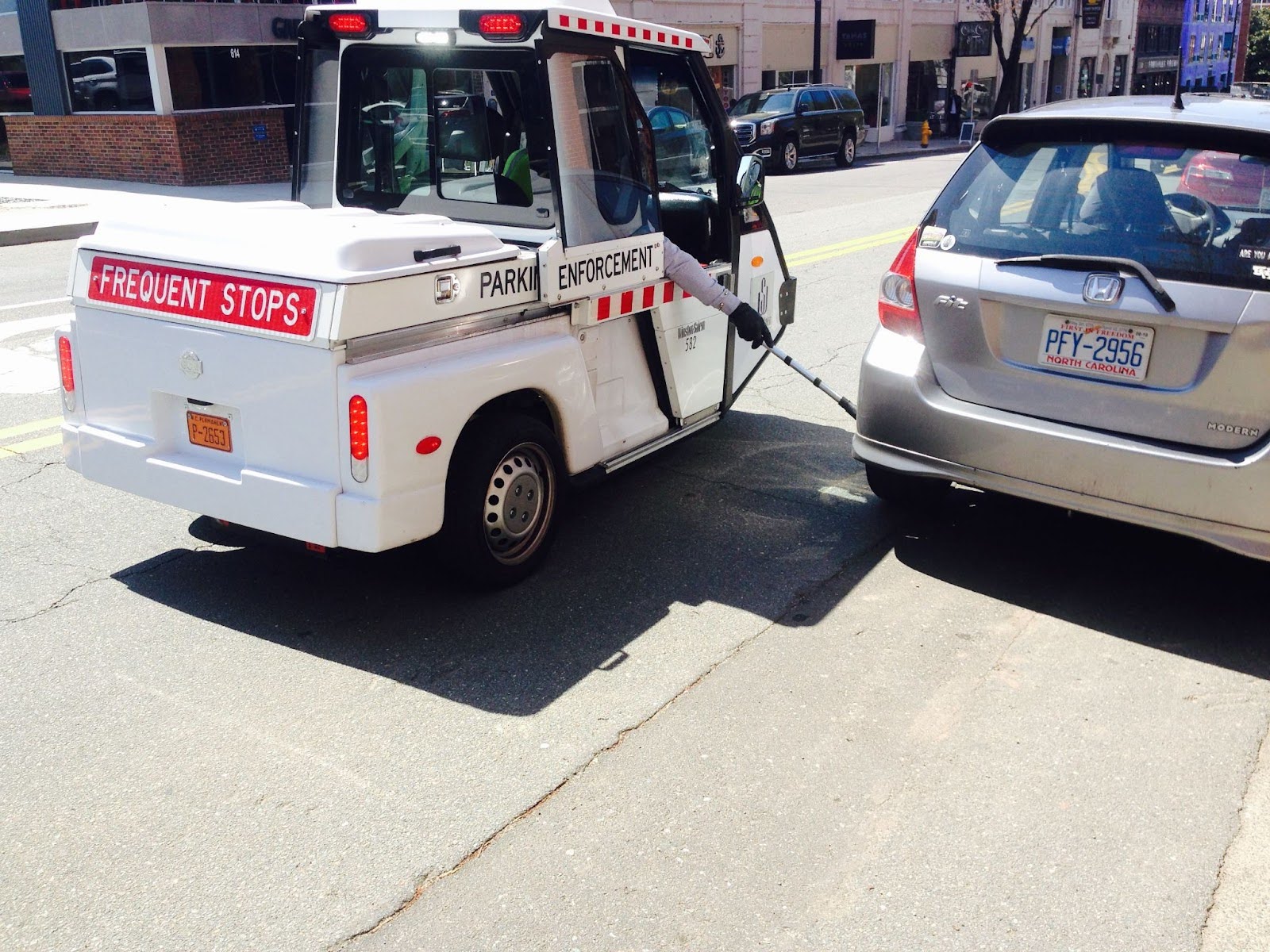
As cities grow more congested, the need for compact, maneuverable vehicles becomes increasingly important. Westward’s electric utility vehicles are designed to navigate crowded urban environments without adding to traffic congestion. Their small footprints allow for easy movement through tight spaces, making them ideal for a range of urban tasks, from parking enforcement to last-mile delivery.
Compact Footprint
Westward vehicles, like the MAX-EV and GO-4 EV, feature a compact design that enhances their ability to navigate through busy streets without disrupting traffic. The MAX-EV boasts a 14-foot turning radius, while the GO-4 EV’s turning radius is just 9 feet, allowing both vehicles to move easily through narrow streets, between parked cars, and around tight corners. This ability to maneuver efficiently reduces the need for larger, space-consuming vehicles in urban fleets.
Ease of Maneuvering in Tight Spaces
These vehicles are specifically built to excel in dense urban environments, where space is at a premium. The MAX-EV’s compact size ensures that it can operate in areas that are inaccessible to larger vehicles, while the GO-4’s agility makes it perfect for high-traffic areas. This ease of maneuverability not only improves efficiency but also helps reduce traffic congestion, keeping urban operations smooth and uninterrupted.
Built to Last: The Durability of Westward Vehicles
Westward’s electric utility vehicles are designed to withstand the rigorous demands of urban environments. Durability is a key factor in ensuring that these vehicles provide long-term value to municipalities and businesses. Westward’s focus on rugged construction and reliability ensures that their vehicles remain operational for years, even under challenging conditions.
Rugged Construction
The MAX-EV features a 2.5-inch tubular steel chassis, providing a strong foundation for handling the rough and unpredictable surfaces of city streets. This durable frame ensures that the vehicle can endure heavy loads, frequent use, and harsh weather without compromising performance. Whether navigating potholes or transporting heavy materials, the MAX-EV is built to handle it all. The chassis finish is very corrosion resistant with a zinc-primer and baked on powder coat paint applied.
Proven Longevity
Westward’s vehicles have been tested in real-world urban environments for over a decade, proving their reliability and longevity. The combination of durable materials and high-quality engineering means that Westward vehicles experience fewer breakdowns and less wear over time. Some city fleet customers have used the vehicles for up to 20+ years!
Key benefits include:
- Reduced maintenance costs due to long-lasting components.
- Consistent performance, even after years of use.
- Lower vehicle turnover, ensuring that cities and businesses can maximize their investment over time.
This durability ensures that Westward vehicles remain a valuable part of any urban fleet, providing long-term reliability and minimizing operational disruptions.
Enhancing Worker Safety and Comfort
Westward’s electric utility vehicles are designed with both operator safety and comfort in mind, ensuring that city employees and fleet operators can work efficiently and comfortably during long shifts. In demanding urban environments, where safety and ergonomics are crucial, Westward vehicles stand out by prioritizing features that protect workers and enhance their experience on the job.
Safety Features
Westward vehicles are equipped with a variety of safety features that reduce risks for operators. The high-visibility cab ensures that the vehicle is easily seen by pedestrians and other drivers, reducing the likelihood of accidents. Sliding doors provide quick and safe exits, particularly in high-traffic areas, while adjustable air-ride seats enhance stability and comfort for drivers, reducing the risk of injury from long hours behind the wheel.
Ergonomic Design
The ergonomic design of Westward vehicles addresses the physical strain that can occur during long shifts. Features like air-ride seating and optimized cab height allow drivers to easily enter and exit the vehicle without strain, making frequent stops less taxing. By focusing on operator comfort and reducing fatigue, these vehicles help improve both productivity and safety, especially in tasks like parking enforcement and delivery operations.
Versatile Applications for Urban Operations
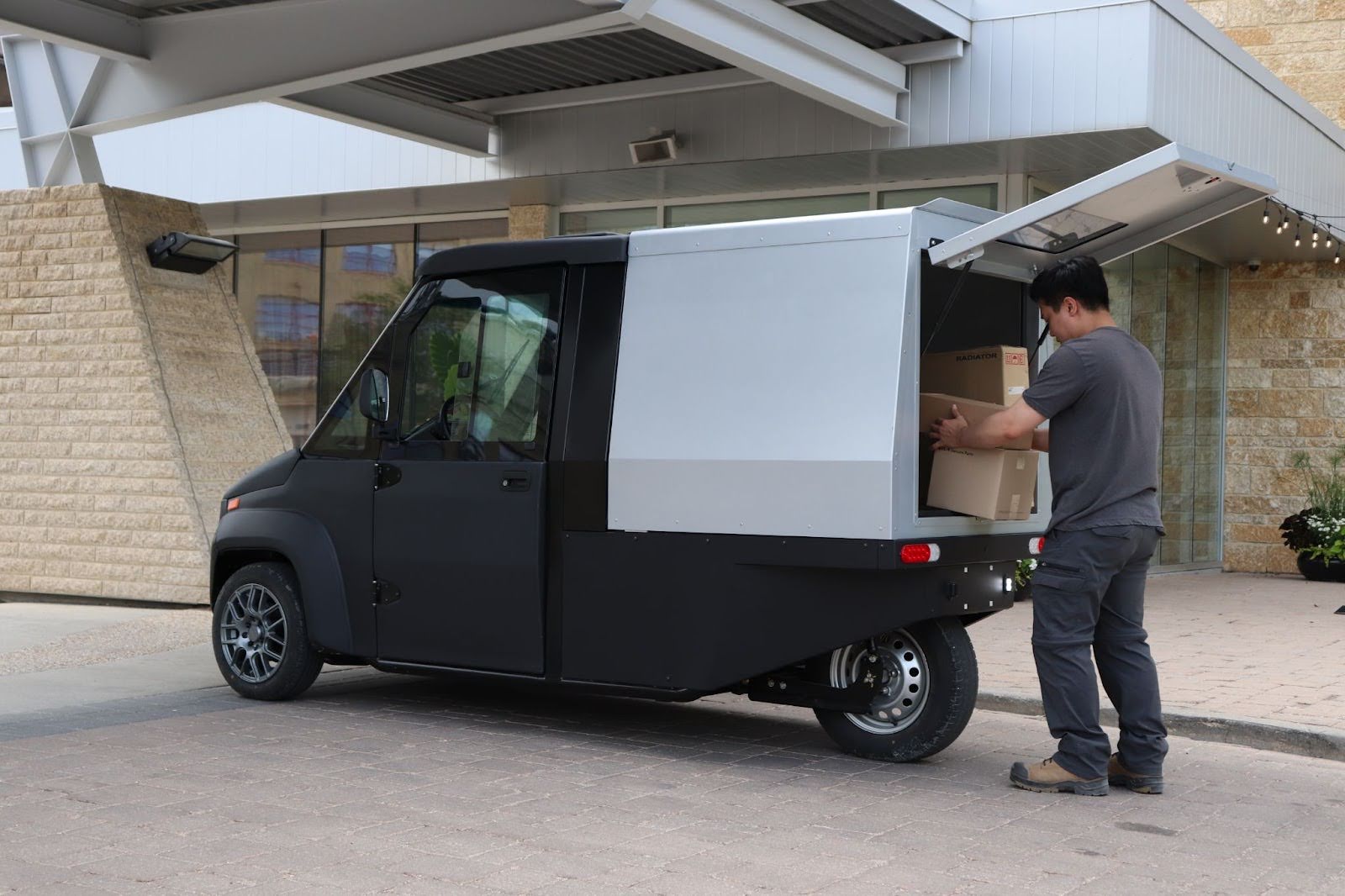
Westward’s electric utility vehicles are not limited to a single task; they offer multi-functional capabilities that make them ideal for a wide range of urban applications. From parking enforcement to last-mile delivery and campus maintenance, Westward’s vehicles provide municipalities and businesses with the flexibility to adapt to diverse operational needs.
Multi-Use Capabilities
The GO-4 XTF, with its extended flat deck, and the MAX-EV with customizable configurations, are designed to handle various urban tasks efficiently. These vehicles can easily switch between roles, offering versatility for city fleets:
- Parking enforcement: The compact size and maneuverability of Westward vehicles make them perfect for patrolling tight city streets and parking lots.
- Last-mile delivery: The customizable configurations allow for efficient transportation of goods in crowded urban areas, where larger vehicles may struggle to navigate.
- Campus maintenance: Westward vehicles are ideal for maintaining large campuses, offering the ability to transport materials, tools, and personnel efficiently across different locations.
Customizable Options
Westward vehicles can be equipped with a range of customizable features to suit specific urban needs, including:
- Tow hitches for pulling equipment.
- Tilting beds for easy loading and unloading of materials.
- Van bodies for secure transportation of goods.
Inquire for a long list of available options.
A Sustainable Choice for the Future
As cities continue to grow and face increasing environmental challenges, the need for sustainable urban transport solutions has never been more urgent. Westward’s electric utility vehicles, like the MAX-EV and GO-4 EV, offer a compelling solution by combining environmental benefits with economic advantages. These vehicles are designed to not only reduce the carbon footprint of city fleets but also deliver long-term operational savings.
Economic and Environmental Benefits
Westward’s electric vehicles provide significant cost savings through reduced fuel consumption and minimal maintenance requirements. By eliminating the need for gasoline or diesel, cities can save substantially on fuel expenses while also cutting down on vehicle maintenance costs due to the simplicity and durability of electric motors and batteries. On the environmental side, Westward’s vehicles offer zero tailpipe emissions, contributing to cleaner air and a healthier urban environment. See our online fuel savings calculator to check your fleets estimated cost savings.
